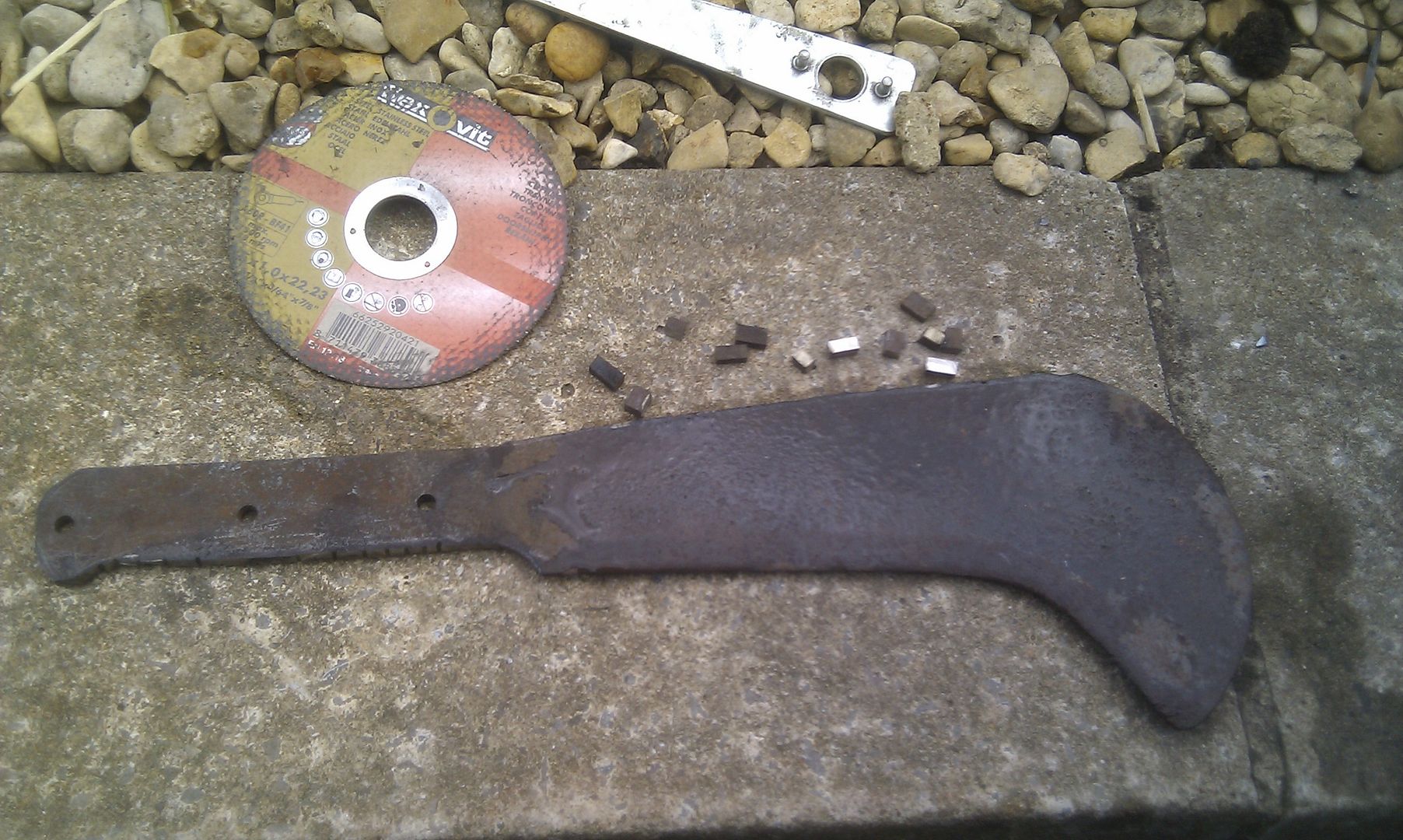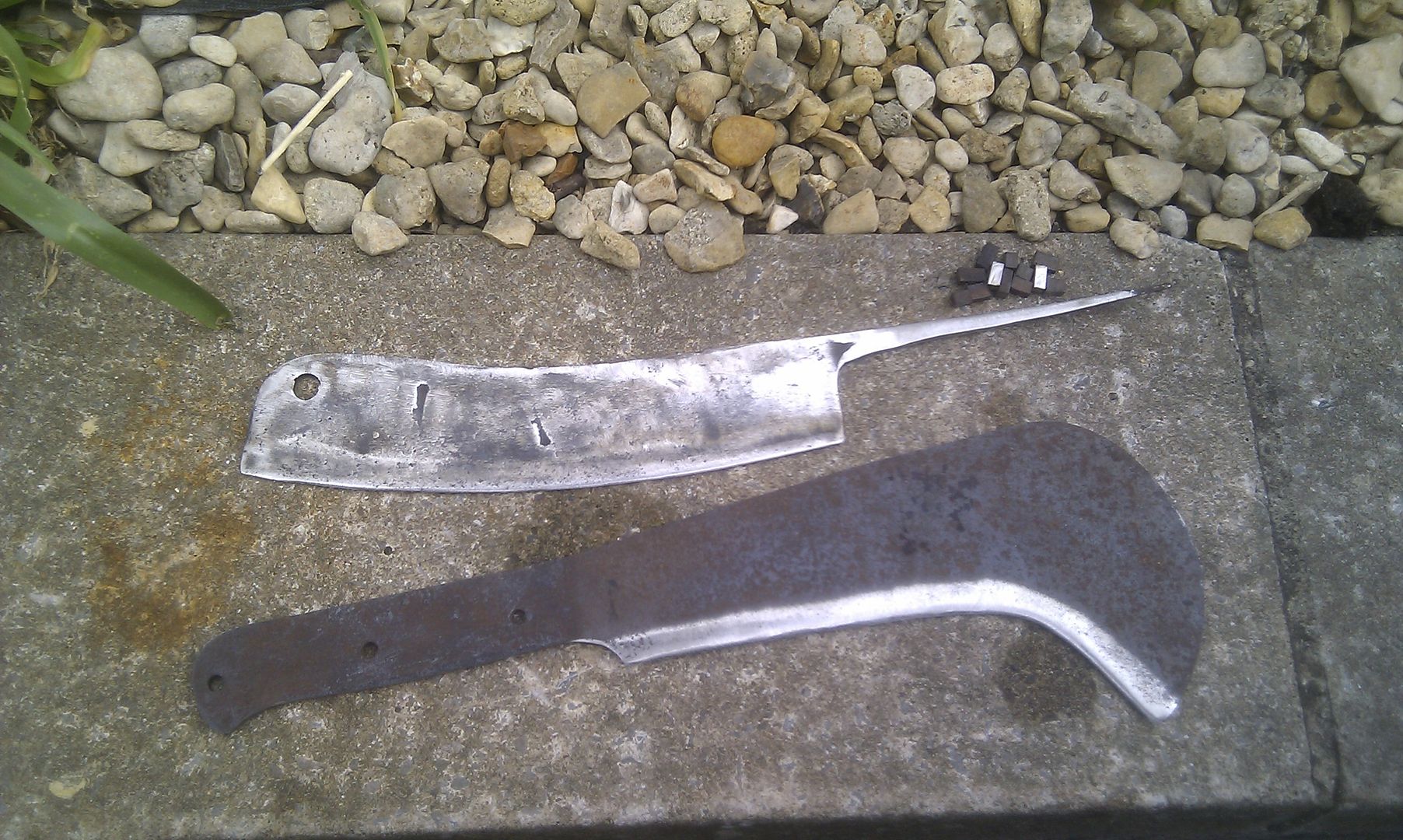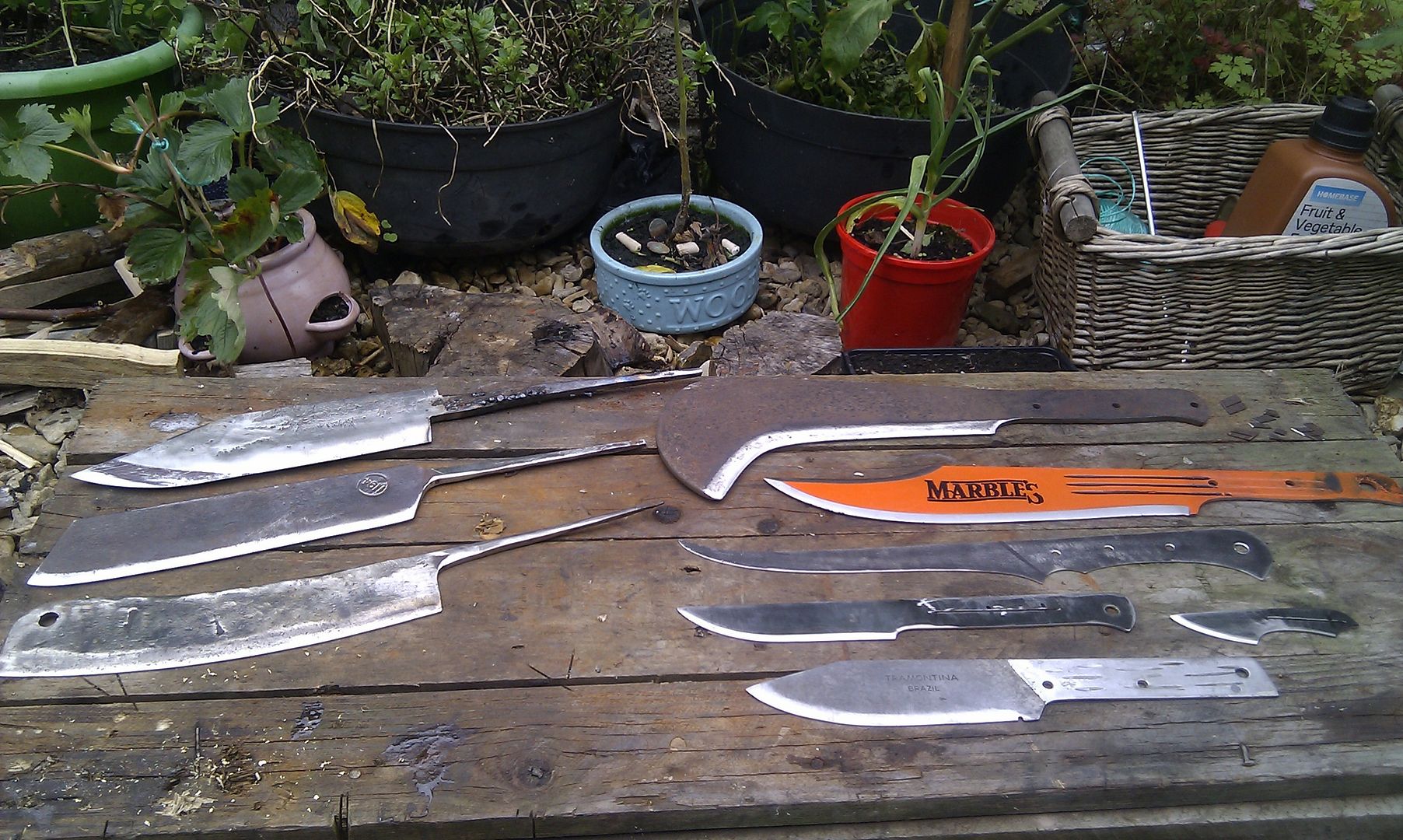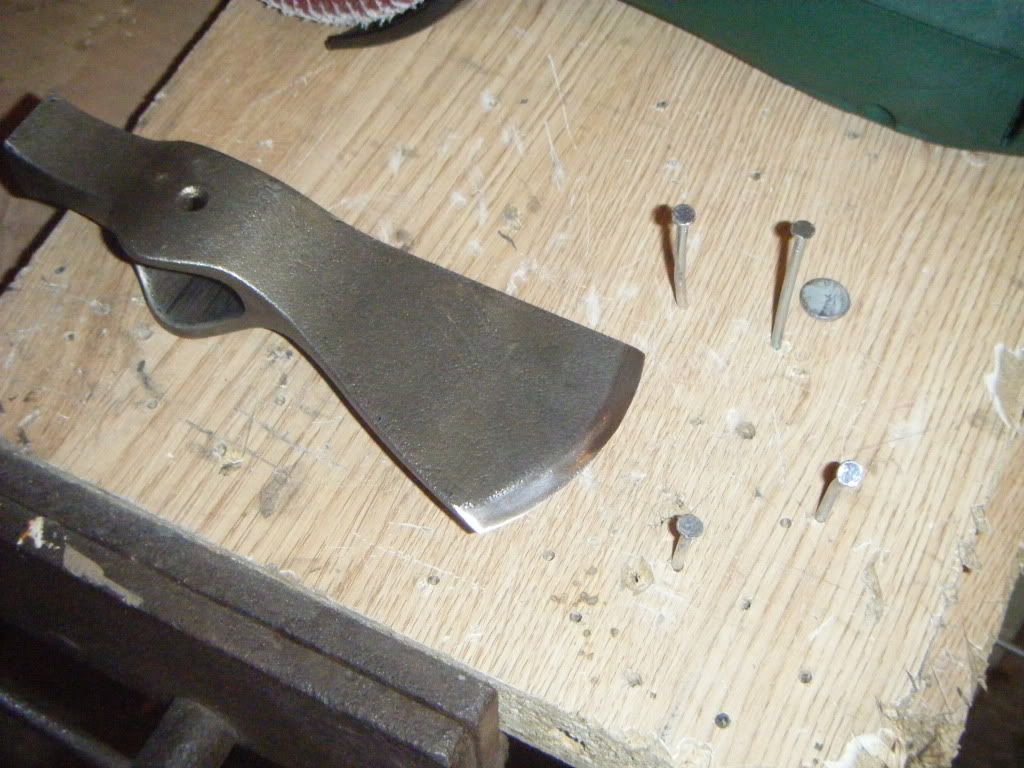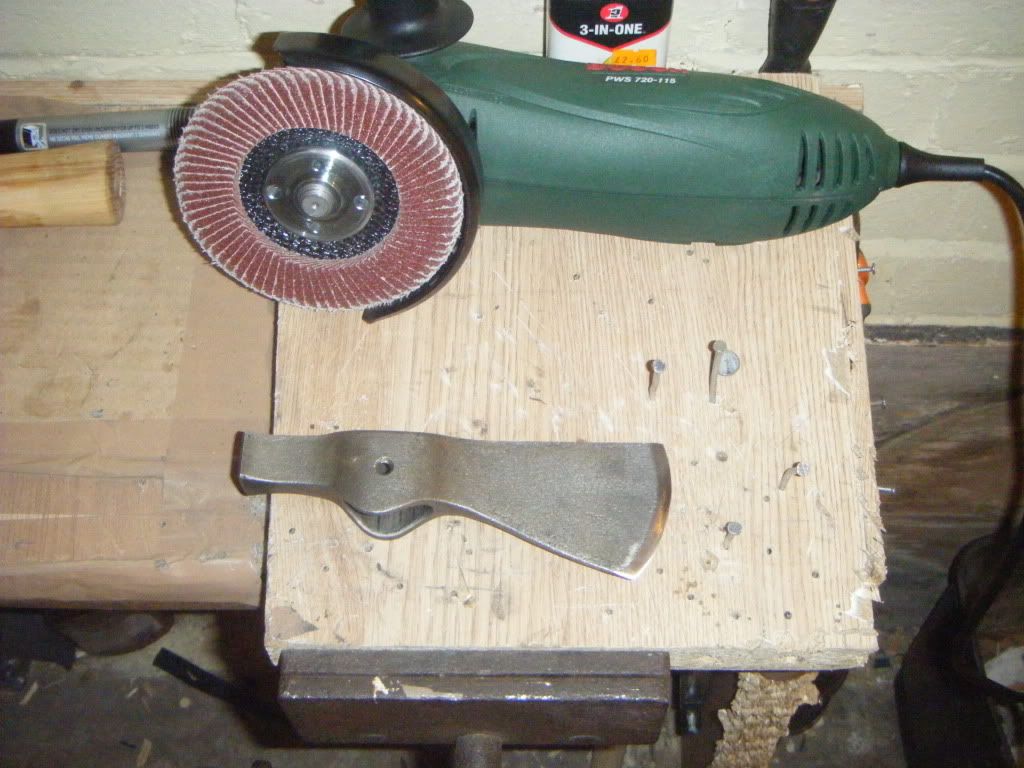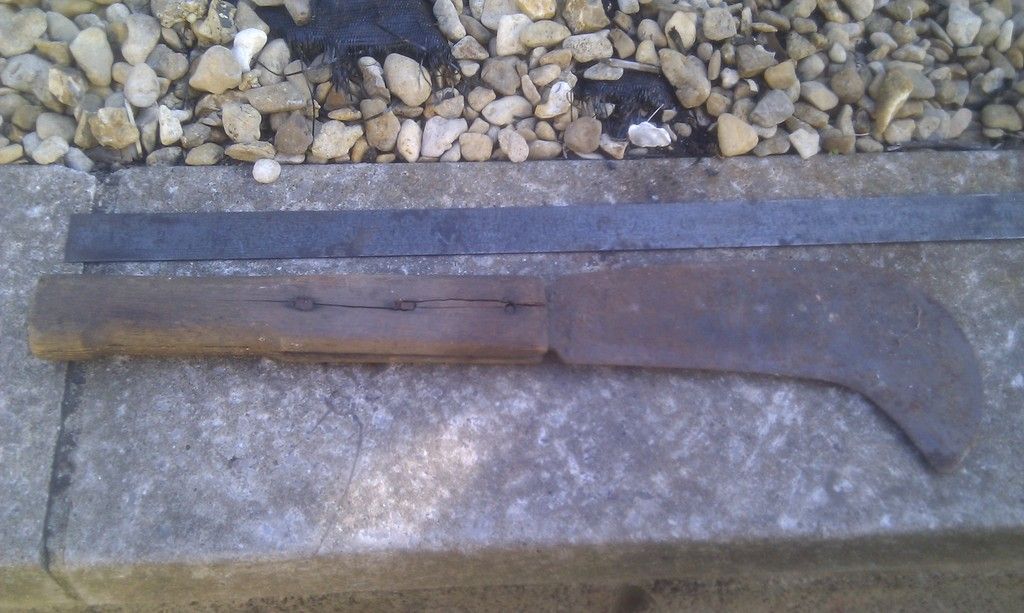
I've never seen once like this before. Usually stick tang, occasionally socket handle but.. full tang!? NEVER!
No obvious makers mark, but seems solid and old enough to have used good steel. It had old nails as handle pins and obviously an elongated wooden handle.
After a few whacks with the hammer and the bolt cutter treatment to get rid of the stubborn peened nails/pins I'm left with this..
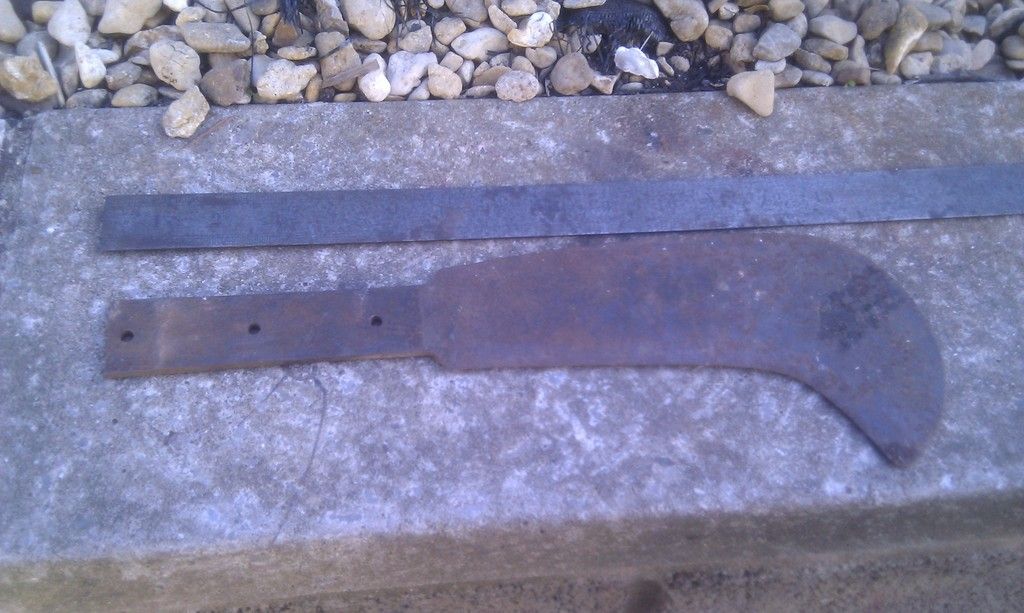
I'm gona reshape the the handle to a comfy contoured type and slap on something a little more fancy than woodworm eaten randomwood!
Not bad for about £3?
Stay tuned for the progression pictures and overly elongated explanation/rambling.
Got a red neck from todays graft but I'm gona do my best to finish off long due projects for my audience!
Thanks for looking

